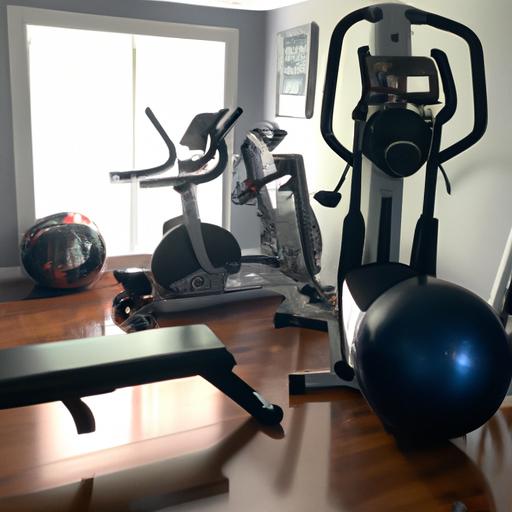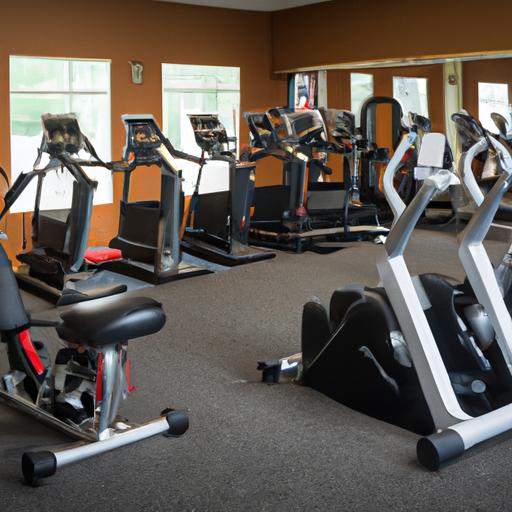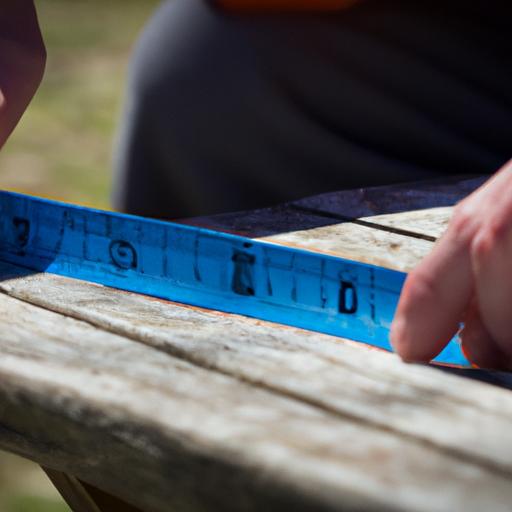How to Measure Picnic Table Legs: Accurate Measurements for Perfect Outdoor Gatherings
Whether you’re planning a cozy family picnic or a fun-filled outdoor gathering with friends, having a sturdy and stable picnic table is crucial. Picture this: you’ve set up your picnic spread with delicious treats, only to find out that your table wobbles or stands unevenly on the ground. Frustrating, right? That’s where measuring picnic table legs accurately comes into play. In this article, I will guide you through the process of measuring picnic table legs, ensuring a stable and enjoyable experience for all. So, let’s dive in and discover the secrets to achieving perfectly measured picnic table legs!
A. Importance of Measuring Picnic Table Legs
Measuring the legs of your picnic table may seem like a mundane task, but it is vital for a seamless outdoor experience. Accurate measurements help ensure that the table stands firmly on any surface, providing a stable platform to enjoy your meals and create lasting memories. By measuring the legs, you can identify any inconsistencies in length, width, or height, allowing you to make necessary adjustments or replacements. It’s like laying a strong foundation for a beautiful structure – without it, everything else might crumble.
B. Benefits of Accurate Measurements
When it comes to picnic table legs, precision is key. Accurate measurements offer numerous benefits that enhance your picnic experience. Firstly, they eliminate the annoying wobbling or tilting that can disrupt your mealtime and cause spills. Imagine savoring a scrumptious sandwich without worrying about your drink toppling over! Secondly, precise measurements ensure even weight distribution, making the table safer for everyone, especially little ones who might lean or play on it. Lastly, accurate measurements enable you to choose the right replacement legs or make adjustments if needed, saving you time, money, and frustration in the long run.
C. Overview of the Article’s Content
In this article, I will provide you with a step-by-step guide to measuring picnic table legs accurately. We will explore the different types of picnic table legs and the common materials used for their construction. I will also share essential tools needed for precise measurements and offer tips for selecting the right ones. Together, we will walk through the process of measuring the length, width, and height of picnic table legs, ensuring consistent and reliable results. Additionally, I will address common measurement issues and provide troubleshooting tips to overcome them. So, let’s roll up our sleeves and embark on this journey to create a stable and enjoyable picnic experience!
Understanding the Picnic Table Legs
A. Different Types of Picnic Table Legs
When it comes to picnic table legs, there are various types to consider. Each type offers its unique characteristics and functionality. Familiarizing yourself with these options will help you make an informed decision based on your specific needs and preferences.
-
Folding Legs: These versatile legs are perfect for those who prioritize portability and easy storage. Folding legs can be conveniently collapsed, allowing you to transport or store the picnic table with minimal effort. They are commonly found in portable picnic tables and are ideal for picnics on the go.
-
Fixed Legs: As the name suggests, fixed legs are permanently attached to the picnic table. They provide excellent stability and durability, making them suitable for more permanent outdoor setups. Fixed legs are often found in heavy-duty picnic tables designed for parks or campgrounds.
-
Adjustable Legs: If you desire flexibility in terms of table height, adjustable legs are the way to go. These legs can be extended or retracted, allowing you to customize the table’s height according to your comfort or specific activities. Adjustable legs are often seen in multipurpose picnic tables or those designed for individuals with varying height requirements.
B. Common Materials Used for Picnic Table Legs
Picnic table legs can be crafted from a variety of materials, each with its own set of advantages and considerations. Understanding the materials used will help you select the most suitable option for your picnic table.
-
Wood: Wood is a popular choice for picnic table legs due to its natural beauty and durability. Common types of wood used include cedar, pine, and teak. Wood legs offer a classic and rustic charm, blending seamlessly with outdoor environments. They can be treated to withstand weather elements and can be easily repaired or replaced if necessary.
-
Metal: Metal legs, such as steel or aluminum, provide exceptional strength and stability. These legs are resistant to rust and corrosion, making them perfect for outdoor use. Metal legs are often found in commercial-grade picnic tables or those designed for heavy usage. They offer a modern and sleek aesthetic that complements contemporary outdoor settings.
-
Plastic: Plastic legs are lightweight, low-maintenance, and affordable. They are commonly used in portable picnic tables or those intended for occasional use. Plastic legs are resistant to weather damage and easy to clean, making them a practical choice for outdoor gatherings.
By understanding the different types of picnic table legs and the materials used, you can now make an informed decision when selecting or replacing legs for your picnic table. Let’s move on to the next section where we will explore the essential tools needed for measuring picnic table legs accurately.
Tools Needed for Measuring Picnic Table Legs
When it comes to measuring picnic table legs accurately, having the right tools at your disposal is essential. These tools not only enable precise measurements but also make the process easier and more efficient. Let’s explore the essential tools you’ll need and discover some handy tips for selecting the right measuring tools.
A. Essential Tools for Accurate Measurements
-
Measuring Tape: A reliable measuring tape is a must-have tool for measuring picnic table legs. Opt for a sturdy tape with clear markings and a locking mechanism to ensure accurate readings. The tape should have both metric and imperial measurements for versatility.
-
Level: To determine if your picnic table legs are even, a level is indispensable. It helps you identify any inconsistencies in length or height. Look for a sturdy and precise level that can be easily placed on the table legs.
-
Square Ruler: A square ruler is ideal for measuring the width of your picnic table legs. It ensures that all sides are perpendicular, resulting in a stable and well-balanced table. Choose a square ruler made of durable material with clear markings for accurate measurements.
-
Pencil and Paper: While not technically tools, having a pencil and paper handy is crucial for jotting down measurements and keeping track of any adjustments you may need to make. This will help ensure that you have all the necessary information at your fingertips.
B. Tips for Selecting the Right Measuring Tools
-
Quality and Durability: Invest in high-quality measuring tools that will withstand repeated use and provide accurate results. Cheap and flimsy tools may lead to inaccurate measurements and frustration.
-
Size and Portability: Consider the size and portability of the measuring tools. They should be compact enough to carry around but also long enough to measure the entire length of the picnic table legs.
-
Ease of Use: Opt for measuring tools that are user-friendly and easy to handle. Look for features like ergonomic grips and clear markings for hassle-free measurements.
-
Read Reviews and Seek Recommendations: Before purchasing any measuring tools, read reviews online and seek recommendations from friends or professionals who have experience in measuring picnic table legs. Their insights can help you make an informed decision and choose the best tools for the job.
By equipping yourself with the essential tools and selecting the right ones, you’ll be well-prepared to measure your picnic table legs accurately. In the next section, we’ll dive into the step-by-step guide on measuring the length, width, and height of these legs, ensuring a stable foundation for your outdoor gatherings.
Step-by-Step Guide on Measuring Picnic Table Legs
When it comes to measuring your picnic table legs accurately, a systematic approach is key. Follow these step-by-step instructions to ensure precise measurements and a stable picnic experience:
A. Preparing the Table for Measurement
Before diving into measurements, it’s crucial to prepare your picnic table properly. Ensure the table is on a flat and level surface, free from any obstacles that could affect accurate measurements. Clear away any debris or items that might interfere with the process. By starting with a clean and stable surface, you set the stage for precise measurements.
B. Measuring the Length of Table Legs
To measure the length of your picnic table legs, grab a measuring tape or ruler. Place one end at the bottom of the leg and extend it along the leg until reaching the top. Take note of the measurement in inches or centimeters. Repeat this process for each leg, ensuring consistency in your measurements. Remember, accuracy is key, so take your time and double-check your measurements if needed.
C. Measuring the Width of Table Legs
Next, let’s measure the width of your picnic table legs. This measurement determines the thickness or diameter of the legs. Using a measuring tape or caliper, encircle the leg with the measuring tool, ensuring it wraps around the widest part. Take note of the measurement and repeat for each leg. Consistent width measurements contribute to a balanced and stable picnic table.
D. Measuring the Height of Table Legs
The height of your picnic table legs is crucial for achieving a comfortable seating position. To measure the height accurately, place one end of the measuring tape or ruler on the ground, right beside the leg. Extend it upward until reaching the tabletop’s underside. Note down the measurement in inches or centimeters. Repeat this process for each leg, ensuring uniformity in height measurements.
E. Ensuring Consistent Measurements
Consistency is key when measuring your picnic table legs. Double-check your measurements for each leg, ensuring they align with the desired specifications. If you find any significant discrepancies, it may be necessary to make adjustments or seek replacement legs. By maintaining consistent measurements, you create a stable foundation for your picnic table, providing a secure and enjoyable experience for all.
Now that you have successfully measured your picnic table legs, you are one step closer to a sturdy and reliable outdoor gathering. In the next section, we will address common measurement issues that may arise and provide troubleshooting tips to overcome them. So, let’s continue our journey towards picnic perfection!
Troubleshooting Common Measurement Issues
Ensuring accurate measurements for your picnic table legs can sometimes present challenges. But fret not! In this section, we will address common measurement issues and provide effective solutions to overcome them. So let’s dive right in and troubleshoot those pesky problems!
A. Dealing with Uneven Surfaces
One common issue that can throw off your measurements is an uneven surface. When your picnic table rests on an uneven ground or flooring, it can result in inaccurate measurements and an unstable table. But fear not, there are ways to tackle this problem. Start by finding a level spot or using a leveling tool to identify the areas that need adjustment. You can use shims, such as wooden wedges or pieces of cardboard, to fill the gaps and create a stable foundation. By ensuring a level surface, you can obtain precise measurements for your picnic table legs.
B. Addressing Wobbly Table Legs
Nobody wants a wobbly picnic table that threatens to spill your favorite snacks and drinks. Wobbly table legs can be a result of various factors, including uneven leg lengths, loose joints, or worn-out hardware. To address this issue, start by checking each leg’s length and adjusting any discrepancies. Tighten loose joints using appropriate tools like a wrench or screwdriver. If the hardware is worn or damaged, consider replacing it with sturdy and reliable alternatives. By addressing these issues, you can restore stability to your picnic table and enjoy worry-free gatherings.
C. Correcting Inaccurate Measurements
Sometimes, despite our best efforts, we might end up with inaccurate measurements. The good news is that there are ways to correct them. Start by double-checking your measurements and identifying any discrepancies. If you find the legs are too long, you can trim them down using a saw or appropriate cutting tool. On the other hand, if the legs are too short, consider adding extensions or purchasing replacement legs of the correct height. By making these adjustments, you can ensure accurate measurements and create a stable foundation for your picnic table.
With these troubleshooting tips in your arsenal, you can overcome common measurement issues and achieve stability and accuracy for your picnic table legs. So, let’s tackle those challenges head-on and create the perfect setting for your outdoor gatherings!
Conclusion
In conclusion, accurately measuring your picnic table legs is essential for creating a stable and enjoyable outdoor experience. By taking the time to measure the length, width, and height of the legs, you can ensure that your table stands securely on any surface, eliminating wobbling and potential accidents. Accurate measurements also allow for even weight distribution, making the table safer for everyone, especially young children.
The benefits of precise measurements extend beyond stability and safety. By knowing the exact measurements of your picnic table legs, you can easily replace any damaged or uneven legs, saving you time and money in the long run. Additionally, accurate measurements provide a solid foundation for planning and designing your outdoor space, ensuring that your picnic table fits seamlessly into the overall layout.
Throughout this article, we discussed the importance of measuring picnic table legs, the benefits of accurate measurements, and provided a comprehensive guide on how to measure them step-by-step. We also addressed common measurement issues and offered troubleshooting tips to overcome them.
Now armed with the knowledge and understanding of how to measure picnic table legs, you can confidently set up your outdoor gatherings, knowing that your table will stand strong and sturdy. So go ahead, enjoy delicious meals, create lasting memories, and make the most of your picnic experiences!
Remember, accurate measurements are the key to a stable and enjoyable picnic table, ensuring that your outdoor gatherings are filled with laughter, good food, and cherished moments. So grab your measuring tools, follow our guide, and let’s make your picnic table the centerpiece of unforgettable gatherings!





